March 28, 2017
Presentation:
Transcript:
Webinar Recording:
Welcome Slide
Welcome to Best Practices in Enforcement on Managed Lanes Facilities
Audio:
- Via Computer - No action needed
- Via Telephone - Mute computer speakers, call (866) 863-9293
passcode: 93625572
Presentations by:
Closed captioning is available at:
http://www.fedrcc.us//Enter.aspx/EventID=3234047&CustomerID=321
- You will be notified of the availability of the recording and
PowerPoint presentation from this seminar.
Presentation 1: Managing Enforcement and the Customer Experience
Presented by Cris Sanders
Director of Tolling Operations
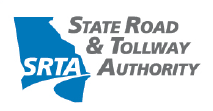
- State Road and Tollway Authority (SRTA) Overview
- Tolling Operations
- I-75 South Metro Express Lanes
- I-85 Express Lanes
- Enforcement
- Customer Experience
SRTA
SRTA is a state-level independent authority created by the
Georgia General Assembly to:
- Operate Georgia toll facilities
- Serve as a State transportation financing arm
- Manage ~ $1.3B in transportation bonds
- Issue & service toll revenue financed debt
- Administer GTIB (Georgia Transportation Infrastructure Bank)Program
SRTA is governed by a five-member Board
SRTA Tolling Operations
- Quality Assurance and Training
- Customer Service
- Operations
- Toll Operations Command Center
Registered Lane
I-75 South Metro Express Lanes
| Toll Exempt |
Tolled |
Prohibited |
- Over-the-road buses
- Emergency vehicles
|
- Single driver
- Carpools
- Motorcycles
- Alternative Fuel Vehicles
|
- Vehicles with more than 6 wheels
|
I-85 Express Lanes
| Toll Exempt |
Tolled |
Prohibited |
- Motorcycles
- Alternative Fuel Vehicles
- Over-the-road buses
- 3 or more person carpools
- Emergency vehicles
|
- Single driver
- 2 Person carpools
|
- Vehicles with more than 6 wheels
|
I-75 South Metro Express Lanes
- 12 miles of newly constructed roadway
- Lanes extends between SR 155/ McDonough Road and SR 138/ Stockbridge
Highway
- Express Lanes were constructed within the median of the existing
roadways
- Lanes are reversible, allowing traffic to travel northbound
in the morning and southbound in the evening
- Traffic flow will be adjusted to support special events such
as NASCAR races and spring break travel
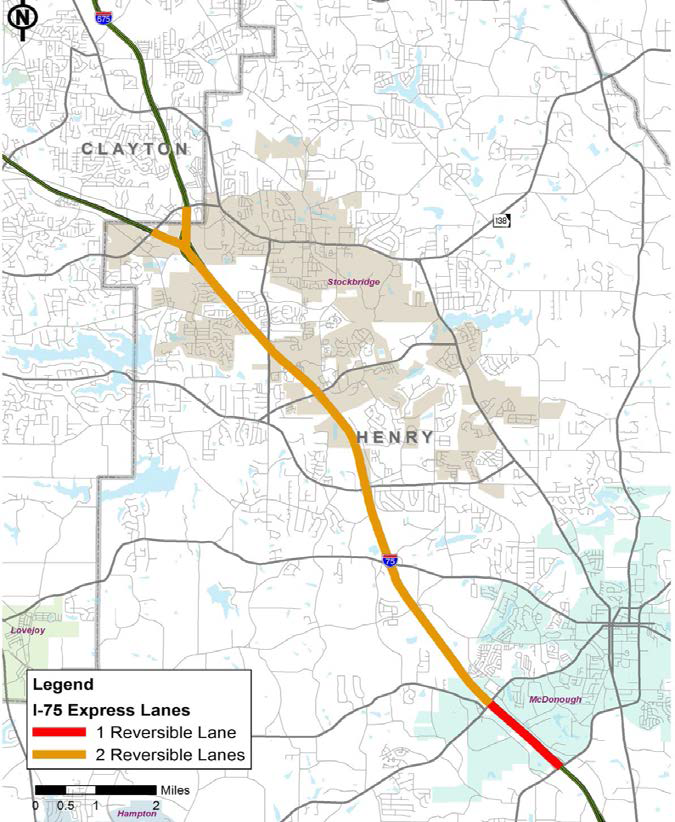
I-75 South Metro Express Lanes
- Groundbreaking October 6, 2014
- Construction took approximately two years
- Lanes were opened to traffic January 2017
- Georgia Department of Transportation (GDOT) is responsible for
reversing lanes
- SRTA is responsible for setting tolls
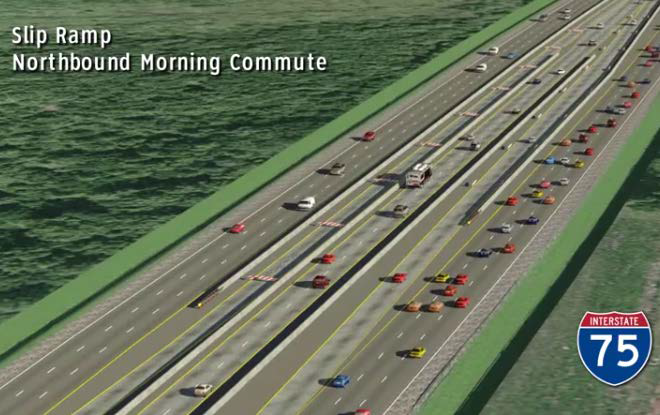
I-85 Express Lanes Overview
- 15.5 miles
- 1 lane in each direction
- Painted, rumble-striped buffer; no physical barriers
- 66 active toll points, ½ mile apart
- Dynamically priced
- Lanes operate 24/7
- Registered lane, even for toll- exempt vehicles
- 2 axles; no more than 6 wheels
- 6C transponder technology
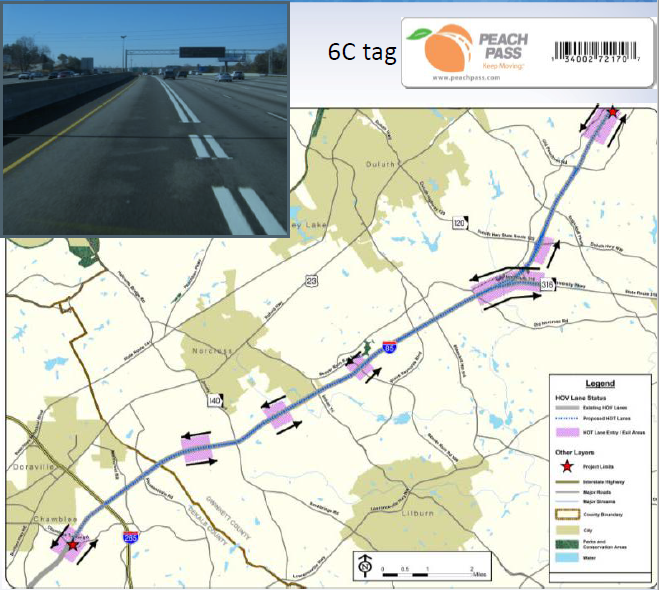
I-85 Express Lanes
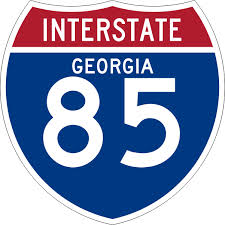
- $182M original project budget
- Won federal grant -$110M
- Express Lanes $60M
- Opened October 1, 2011
- 1st Pricing Demand Management Strategy Project in GA
- HOV2+-HOT3+ Conversion
High Occupancy Vehicle (HOV)
High Occupancy Toll (HOT)
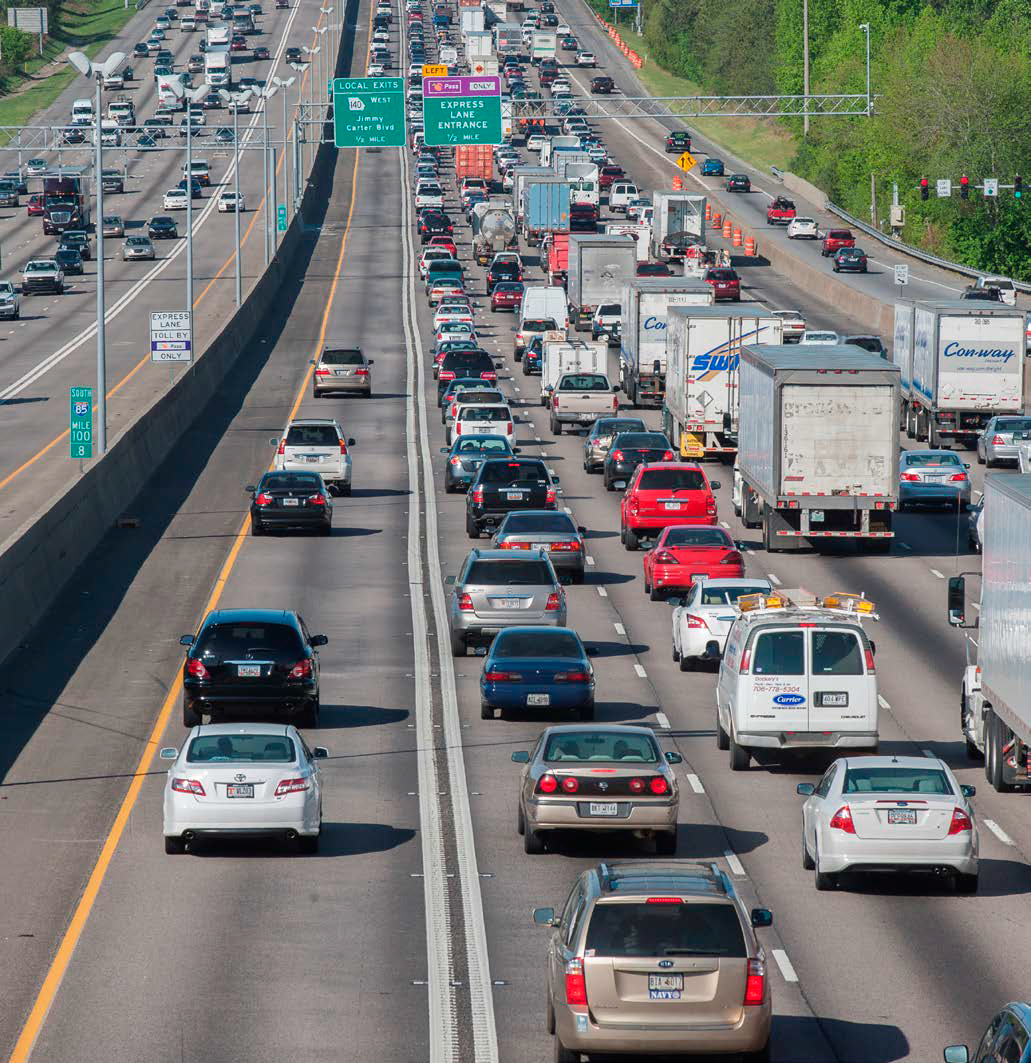
I-85 Express Lanes
"Invisible Barrier" solution
- Overhead tolling system detects vehicle entry/exit
- Gantry spacing deters dodging into the Express Lanes
- Gantry to gantry monitoring detects entry/exit violations
- Automatic toll violation notices
- Indirectly enforces double white line weaving
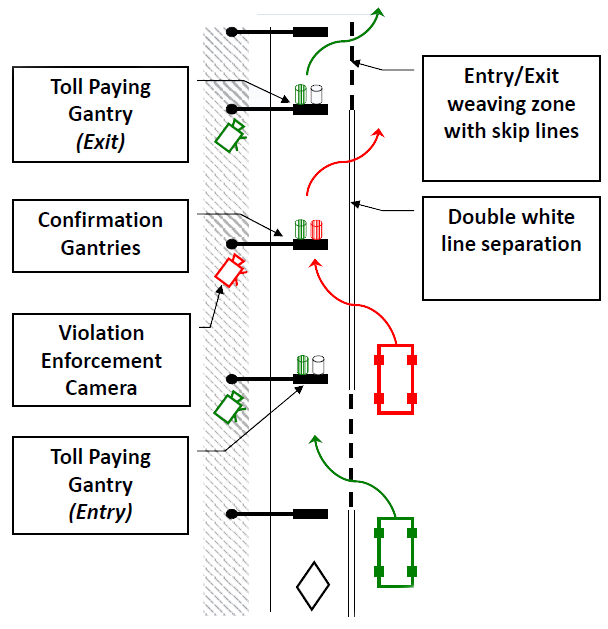
Text of "Invisible Barrier" graphic
- Toll Paying Gantry (Exit)
- Confirmation Gangries
- Violation Enforcement Camera
- Toll Paying Gantry (Entry)
- Entry/Exit weaving zone with skip lines
- Double white line separation
Enforcement
Violations:
- Using the Express Lanes without a Peach Pass transponder
- Occupancy (vehicle does not meet 3+ requirement to ride free)
- Automatic License Plate Recognition (ALPR)
- Addressing crossing the solid, double white line - Gantry Controlled
Access
Penalties:
- SRTA toll violation = $25 + toll amount
- May also be issued citation by law enforcement
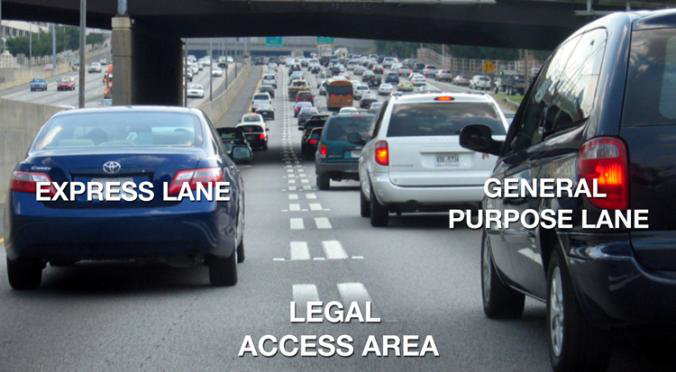
Vehicle Occupancy Enforcement
- Qualifying carpoolers self-declare HOV status by telephone,
smart phones, or online account.
- Tolling Back Office transmits list of "Toll-Exempt"
vehicles to a mobile Automatic License Plate Recognition (ALPR )
system onboard police cars
- ALPR scans license plate and notifies officer to check occupancy
for vehicles registered with SRTA in the 3+ non-toll mode
- The ALPR reads license plate of passing vehicles and notify
officers to check occupancy of only "Toll Exempt" vehicles
- Full list updated daily
- Incremental updates every 5-10 minutes throughout the day
- Officer's on board computer system sends "stop/citation"
information back to SRTA
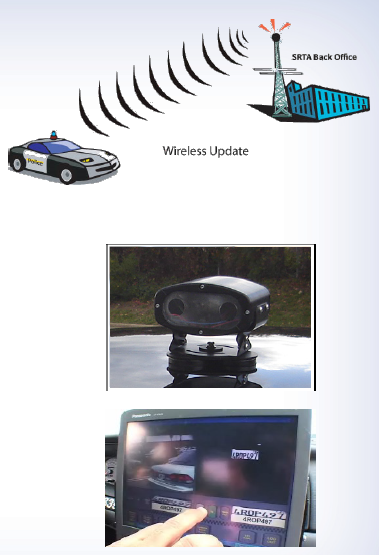
Customer Experience
Toll Mode Options
- There are 2 Modes of a Peach Pass
- Toll: when there are <3 occupants in a vehicle
- Non-toll: when there are 3+ occupants
- Toll Mode Duration Options
- 4 hours
- 1 day
- Weekdays
- Indefinite
- Change between Modes
- 15 minutes before using Express Lanes
- Call, online, in person, Mobile App.
- Automated confirmation
*Toll Mode Change Options apply only for the I-85 Express Lanes
Customer Experience
Violation Processing
- DWL Violations: Entering or exiting Express
Lane by crossing the solid, double white line
- No Double penalties
- Fine and Fee reductions
- Unregistered Use: Using the Express Lanes without
a Peach Pass
- Violator to Customer
- Fine and Fee reductions
- Occupancy: Occupancy (vehicle does not meet
the appropriate number of occupants for toll-free access)
- Declaration status validation
Customer Experience
Payment Options
- Pay N Go
- Payment card purchased at one of our retail partners location
to pay violations
- Online
- Notification provided when customers access their accounts
online
- Interactive Voice Response (IVR system)
- Payment Plans
- Violations with 10 or more transactions
Thank You!
Presentation 2: Best Practices in Enforcement on Managed
Lanes Facilities
March 28, 2017
Joseph Averkamp
FHWA Webinar

Overview
- High Occupancy Vehicle and High Occupancy Toll Lanes are a key
tool used in Managed Lane Systems
- Most systems rely on people honestly declaring if they are qualified
to be in the lane
- Switchable Tag for HOT
- Entering Lane for HOV
- Enforcement by Human Roadside Observers is challenging
Conduent Vehicle Passenger Detection SystemTM... So Far
- Conduent has developed and tested an Automated Vehicle Occupancy
Detection System
- Conduent Vehicle Passenger Detection System™
- Conduent has conducted a series of pilots to assess the system
- Halifax Harbour Bridges
- 495 Express Lanes Northern Virginia
- Colorado DOT I25
- CalTrans I5 in Orange County
- SANDAG I15
- Jougne, France
- LA Metro I110
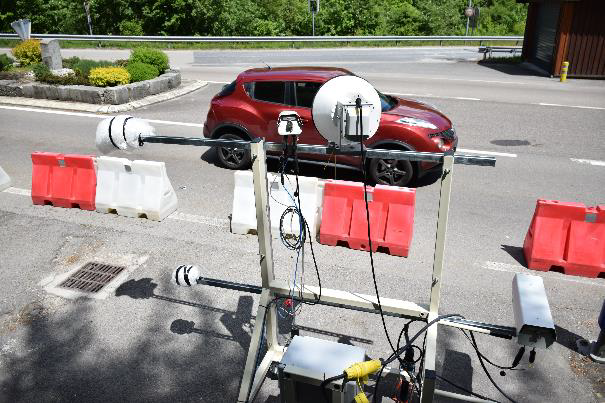
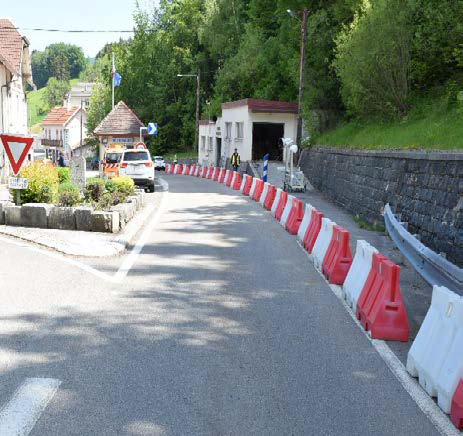
Primary Focus Of Pilots
- What level of automated accuracy can be achieved?
- What is the Violation Rate on the roadway being evaluated?
- How well can human enforcement perform?
- What level of automated accuracy can be achieved? ~95%
- What is the Violation Rate on the roadway being evaluated? Varies
from 11% to 28% depending on the roadway
- How well can human enforcement perform? High volume roadways
are challenging and pulling vehicles over can create a Safety and
Congestion issue
Focused Discussion:
Caltrans Trial : I-5 in Irvine, CA Testing HOV2 Lane, Three Month
Trial
Rear Seat Image Capture Equipment Front Seat Image Capture
Equipment
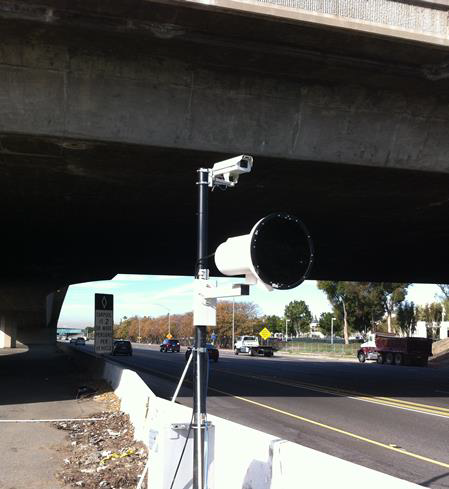
Front Seat Image Capture Equipment
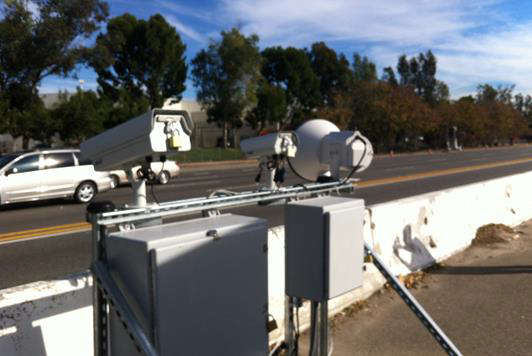
Rear Seat Image Capture Equipment
Conduent VPDS Produces High Quality Images For Manual Image Review
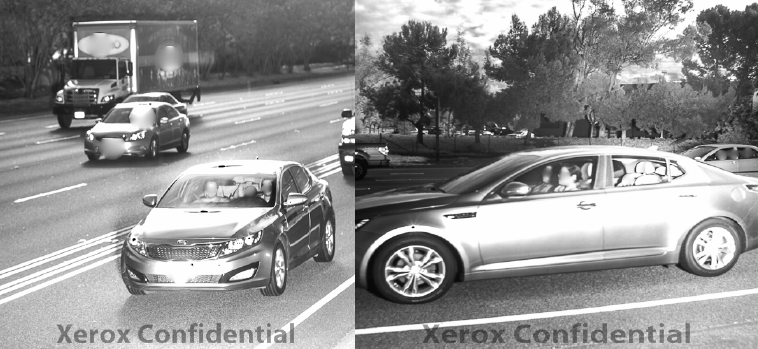
Note: Images Redacted for Privacy
Single Occupant Vehicle Rate Accuracy: Human versus Machine
Conduent VPDS accuracy as compared to Human Roadside Observers
| |
Average Vehicle Count For A Three Hour Period |
XVPDS SOV Rate Accuracy |
Roadside Observer SOV Rate Accuracy |
Mornings 6am-9am
Jan 27, 28, 29
Tues,
Wed, Thurs |
1774 |
95.0% |
35.7% |
Evenings 3pm-6pm
Jan 27, 28, 29
Tues,
Wed, Thurs |
2250 |
95.3% |
35.6% |
Statistics from the CalTrans Trial
| Statistic |
Measure |
Comments |
| Period of Analysis |
January 27,28,29: 6 am-9
am, 3 pm - 6 pm |
|
| Total Vehicles Reviewed |
12,073 |
|
| Violation Rate |
11.65% |
17.4% adjusted down for LEVs |
| Total Violations |
1,406 |
11.65% out of 12,073 |
| Number of Hours During Analysis Period |
18 |
3 days for 6 hours each day |
| Number of Vehicles Seen Per Hour |
671 |
This represents 11 vehicles per minute or one vehicle every
5.4 seconds |
| Violators Per Hour |
78 |
This is the average number of Violators passing this location
each hour. |
The Roadside Observers see a Vehicle every 5.4 seconds -- Don't Look
Away!
Vehicle Occupancy Detection Concept of Operations!
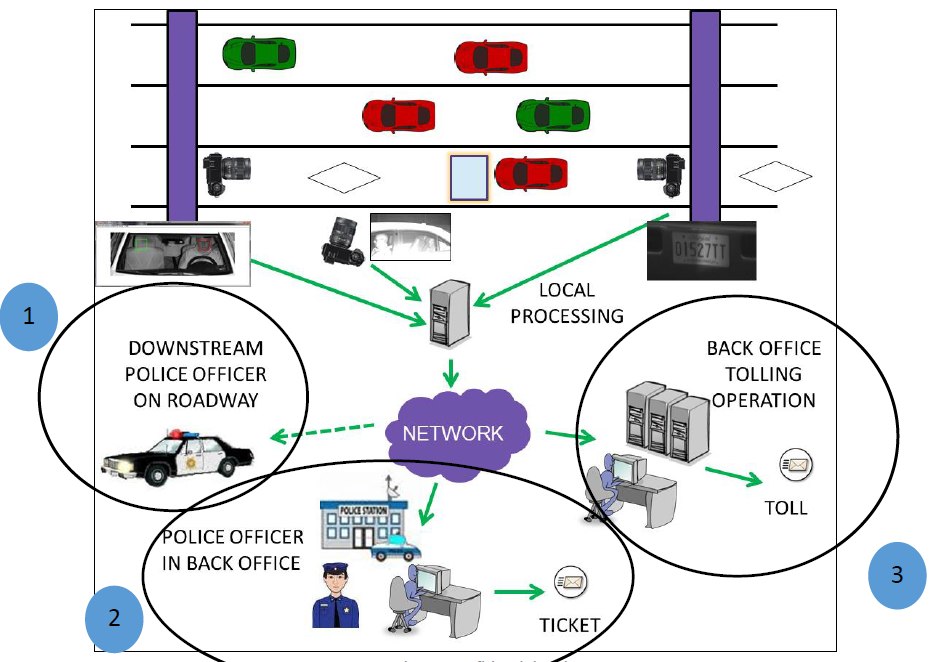
Concept of Operations For High Occupancy Toll Lanes
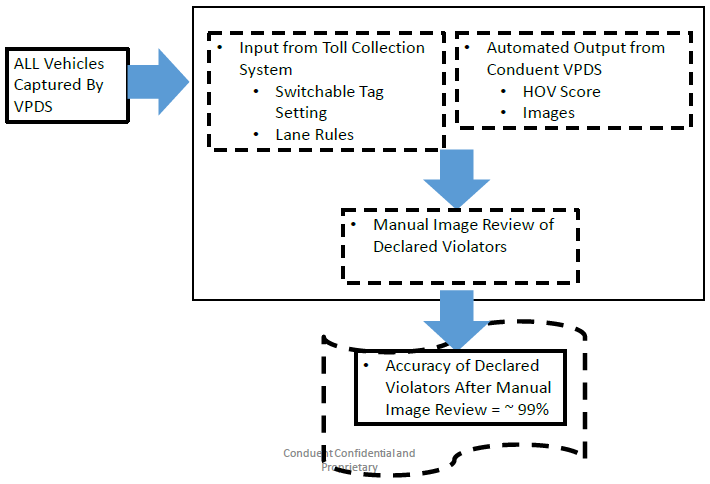
Text of flow chart
- All Vehicles Captured by VPDS
- Input from Toll Collection System
- Switchable Tag Setting
- Lane Rules
- Automated Output from Conduent VPDS
- HOV Score
- Images
- Manual Image Review of Declared Violators
- Accuracy of Declared Violators After
Manual Image Review = ~99%
Economics: The Technology May Work But What About the Business Case?
- Consider a "typical" Toll Lane
- 10,000 vehicles per day
- Violation Rate of 10%-- in studies, Violation Rate was 11%
-28%
- Yields 1,000 violations per day
- 250 Commuting Days a year - 5 days X 50 weeks
- This yields 250,000 Violations or Toll Adjustments Per Year
- Finances
- $10 Toll Charge X 250,000 Toll Adjustments = $2.5 million
per year in "found" revenue on one lane
- Supported with Manual Review and Correspondence Management
Lessons Learned
- Good news! Most people in the HOV/HOT lanes are qualified to
be there: 72%-89%
- Conversely, 11%-28% of the vehicles are not qualified
- Revenue may be important but...
- Safety and Congestion: Stops by enforcement
officers lead to Congestion and Safety concerns
- Equity: Equity on the road is important-----if
a select percentage don't adhere to the rules, others may follow
if there is no visible means of enforcement
- Improving Flow: Reducing non-qualified
vehicles may help restore free flow: an 11% to 28% violation
rate is the difference between Service Level E or F and Service
Level A or B
- Perfection cannot be the enemy of the good
- 95% accuracy is not good enough for completely automated
enforcement, but it is a good start. When augmented by manual
review, the number of mis-categorized vehicles can be reduced
to ~1%
- For the naked human eye, identifying HOV/HOT violators at highway
speeds is very challenging.
© 2017 Conduent Business Services, LLC. All rights reserved.
Conduent and Conduent Agile Stararetrademarks of Conduent Business Services,
LLC in the United States and/or other countries.
Presentation 3: 95 Express Incident Management and Enforcement
Lessons Learned
Sunguide Transportation Management Center
Florida Department
of Transportation - District 6


March 28, 2017
Javier Rodriguez, P.E., FDOT District Six, TSM&O Program
Engineer
Agenda
- Project Overview
- Incident Management Resources
- Enforcement
- Lessons Learned
Project Overview
- Phase 1 Completion
- Northbound - Dec 2008
- Southbound - Jan 2010
- Phase 2 Completion
- HOV to HOT Conversion
- 1 HOV Lane to 2 Express Lanes
- Congestion-Priced Tolling
- Bus Rapid Transit (BRT)
- Ramp Signaling
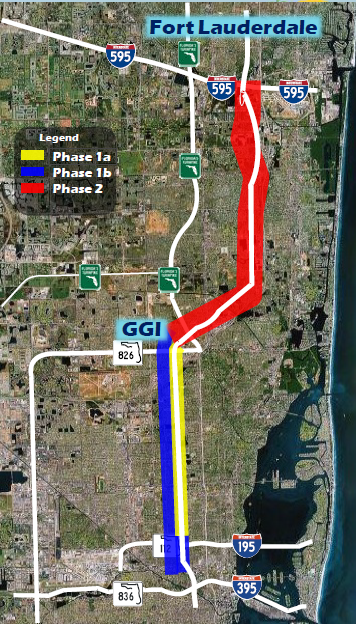
Incident Management Resources
- Major Elements
- Dedicated TMC Express Lane Operators
- Road Ranger Service Patrol
- Added flatbed wrecker
- Added heavy duty wrecker
- Incident Response Vehicle & Operators
- Law Enforcement
- Quick Clearance Procedures
Enforcement
- Electronic Toll Enforcement
- Florida Highway Patrol Support
- Enforcement
- Toll Violation
- Speeding
- HOV
- Improper Lane Change (Lane Diving)
- Hard Closures
- Incident Management
- Relocation of Incidents
- Crash Investigation
- Express Lanes (EL) & Local Lanes (LL)
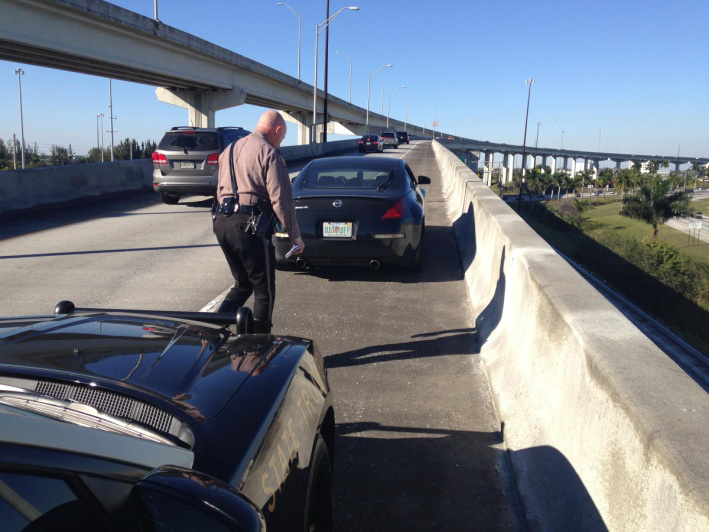
Lessons Learned
-
Operations
- Provide Full Width Shoulders
- Separate EL from LL
- Provide Means of Physically Closing Facility
- Operational Changes should be made ‘Quickly'
- Adequate Supporting Staff & Resources
- Evaluate & Adjust as Necessary
- Mitigate Bad Driver Behavior
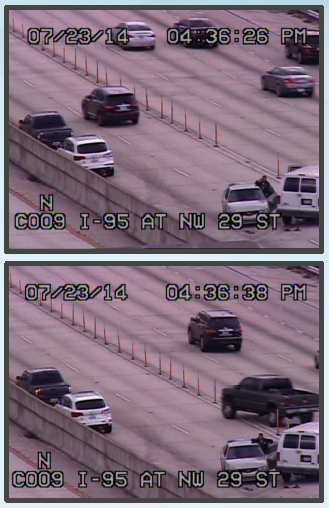
Lessons Learned
- Incident Management
- Dedicated Resources
- Specially Trained & Equipped
- Multi-Agency Partnerships
- FHP Hireback Program
- Traffic Incident Management (TIM) Team
- Table Top Exercises
- Coordination Meetings
- Quick Clearance Procedures
- Dedicated Strategic Staging Areas
Lessons Learned
- Closing Facility
- Posting "CLOSED" - 87% Violations
- Hard Closures
- Post-Incident Pricing
- Regulatory Lane Status Signs
- Color DMS
- Allows for white text on black background
- Enforceable per MUTCD
- Automated Gate System
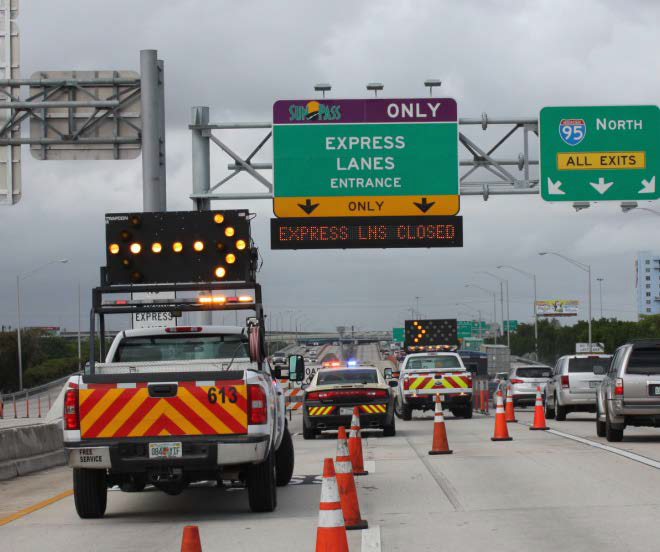
Lessons Learned
- Driver Awareness
- Lane Diving (Moving Violation)
- Toll Violation
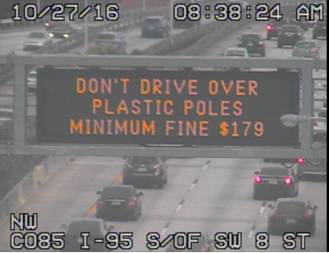
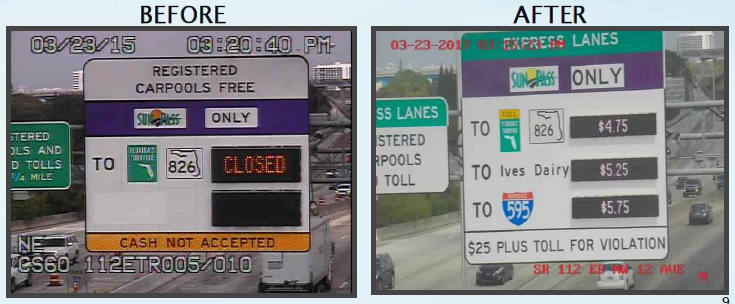
Lessons Learned
- Express Lane Markers
- Lane Diving
- Type and Installation
- Spacing
- Maintenance
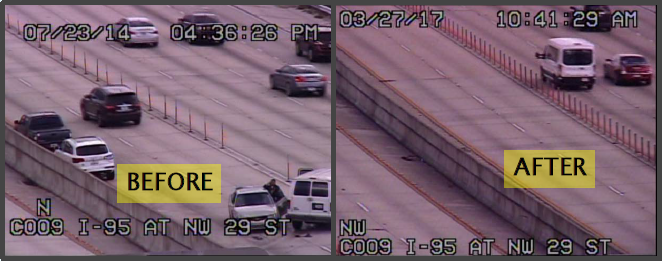
Lessons Learned
- Roadway Design
- Reduced Shoulder Width
- Median Emergency Stopping Sites
- February 2017 - February 2018

"Buzzed Driving is Drunk Driving"
Thank you,
Javier Rodriguez, P.E., FDOT District Six, TSM&O
Program Engineer
javier.rodriguez2@dot.state.fl.us
Presentation 4: Carma Mobility Solutions
Extending mobility freedom to everyone
Carma
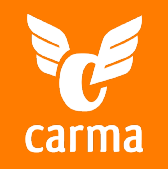
PPP Partnerships
In partnership with local governments and transportation
agencies
Tolling
- Texas Department of Transportation, Central Texas Regional Mobility
Authority; Bay Area Toll Authority; Contra Costa Transportation
Authority, Caltrans
Carpooling
- Washington State DOT; Northern Virginia Regional Council; US
Dept of Defense; Metropolitan Transportation Commission; and Federal
Highway Administration
Carsharing
- City and County of San Francisco; City of Berkeley; and
University of California and Metropolitan Transportation Commission
Parking
- San Francisco Metropolitan Transportation Authority
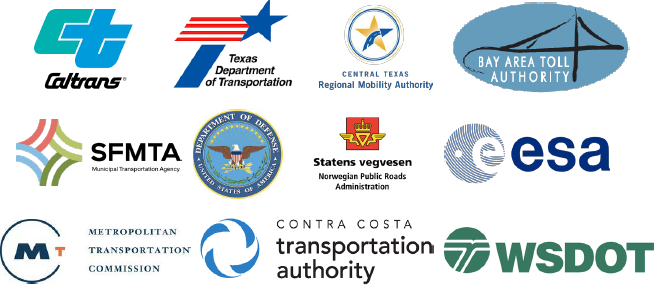
Carpool Incentives
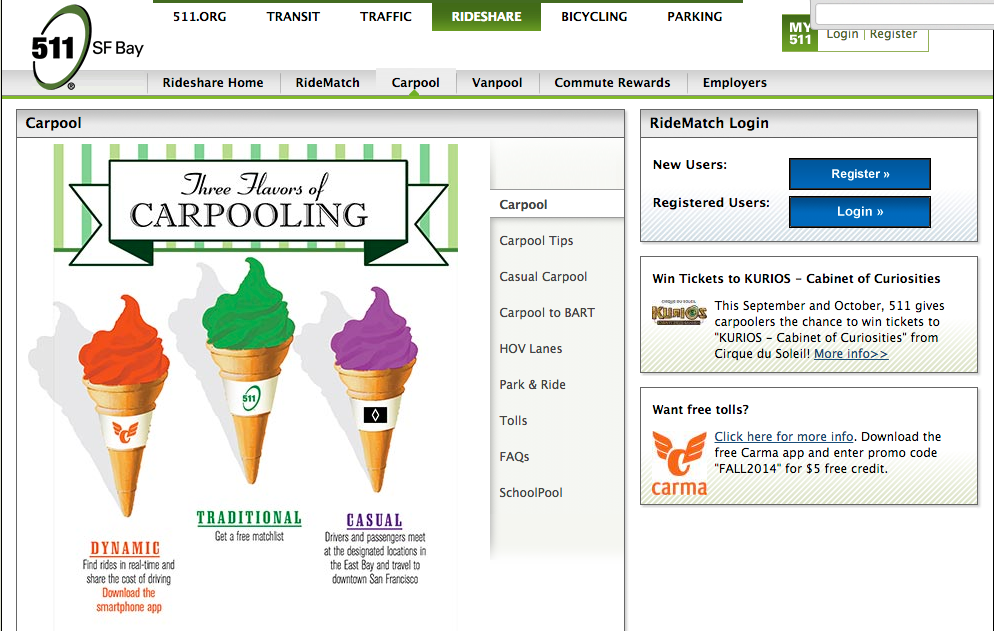
Real-time SOV / HOV travel alerts
Real-time availability at parking lots
Real-time alerts on rider / driver availability at roadside pick-up
zones
Real-time incentive confirmations

Parking Discounts
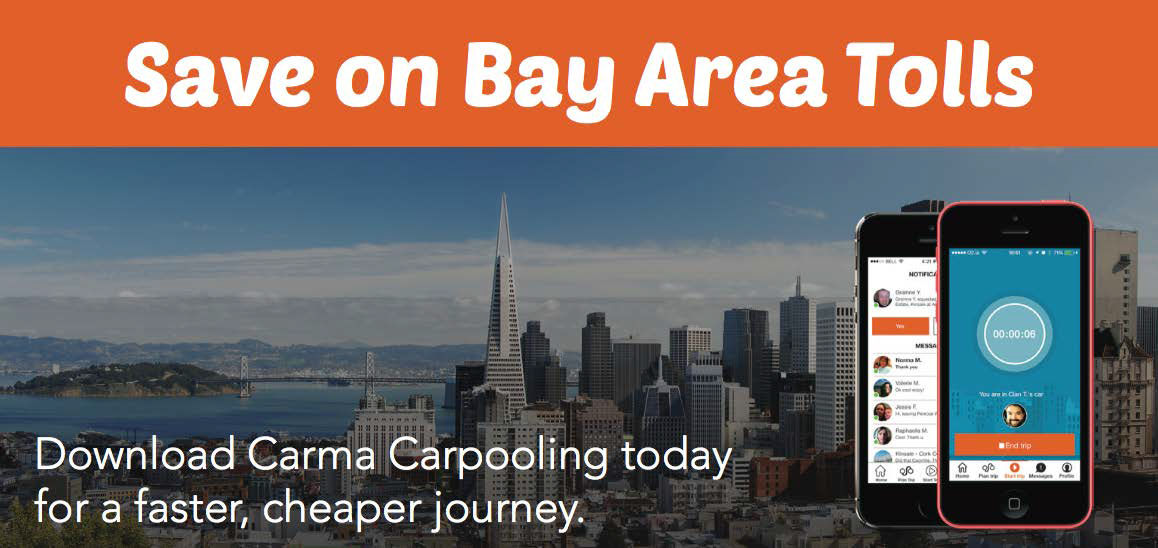
Shift from cars-per-lot to people-per-lot
Near-field occupancy detection at fixed locations
World's first iBeacon implementation for transportation
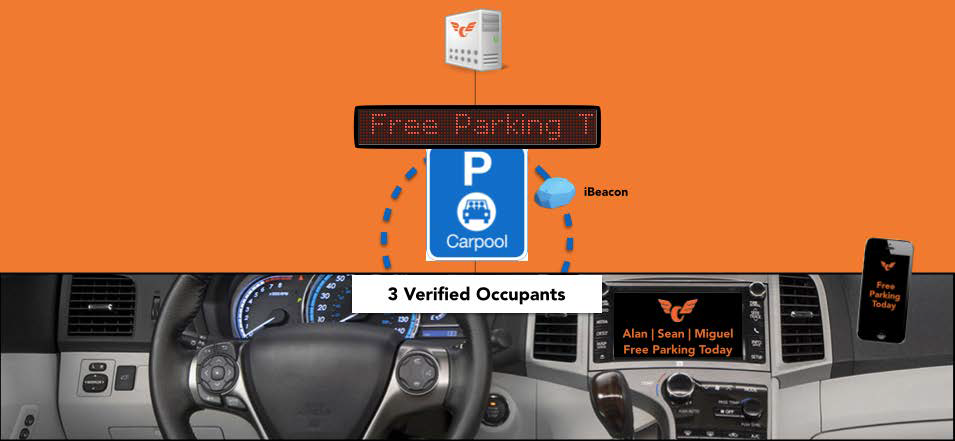
Managed Lane Discounts
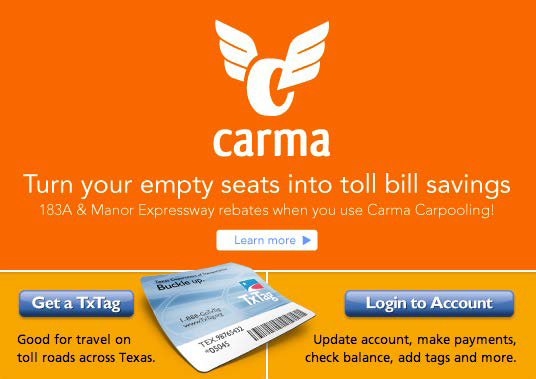
Interoperable with any tolling network via back-end reconciliation
Real-time toll discounts with optional in-car alerts for verified
carpools
Toll sharing amongst vehicle occupants
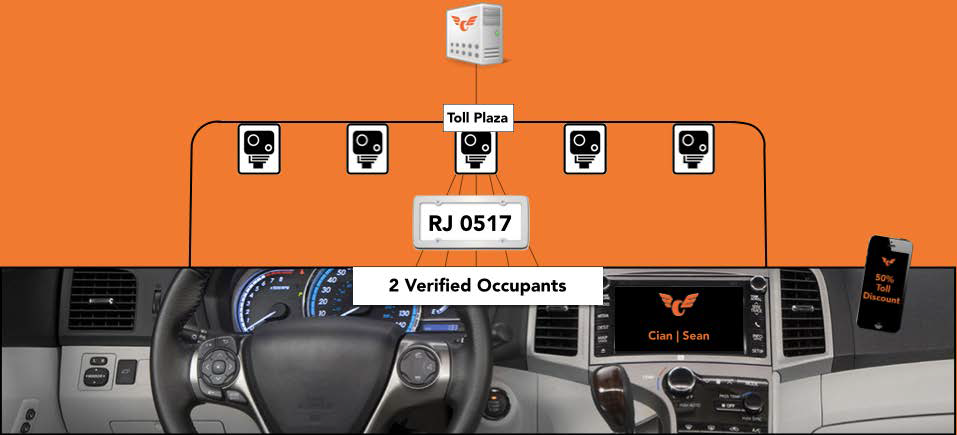
Tolling Enforcement vs Verification
Dominated by legacy roadside systems provided by giant vendors
| Highway Patrol Support Systems |
Switchable Transponders |
Video Analytics (Geometric) |
Infrared |
In Car Sensors |
Mobile Verification |
| 3M, Kapsch Trafficcom, Transcore, Siemens,
IBM, Schneider Electric |
Sirit, Transcore, Kapsch TrafficCom, Telematic
Wireless |
Xerox (VPDS), Cubic (NextCity) |
Siemens, Vehicle Occupancy Detection Corporation
(Dtect) |
Delphi, Siemens |
Carma |
 |
 |
 |
 |
 |
 |
"The Wildcard is Smartphone Tolling"
-Mark Cantelli, Xerox, VP, State Government Transportation
- Invulnerable to weather conditions, sun reflections, vehicle
geometry, window tint, posture, skin color, travel speed
- No roadside infrastructural investment required
- High reliability, accessibility and scalability
Carma Occupancy
Automated Occupancy Verification Using Mobile Technology
Ambient Occupancy Detection
- Beacon technology or embedded in Toll Tag
- Near Field Communications for detection upon vehicle entry /
exit
Occupant Devices
- Smartphone, with Carma app installed
- Optional Beacon for occupants without a smartphone
Continuous Monitoring of Coordinated Proximity
- Occupancy verified throughout a trip
- Patent-pending (US 20110059693)
- Enabling non-PII travel pattern analysis
Occupancy API
- Toll Authority queries web-API for verified occupancy at any
time and location in network.
In-App Occupancy Display
- Verified occupancy status can be inspected in the app, but no
user interaction required at any time.
Offline Reconciliation
- Smartphones without data connection report occupancy once reconnected
to data.








































![]()







